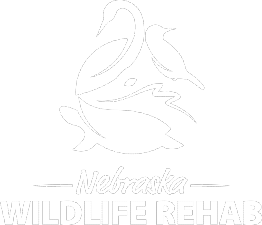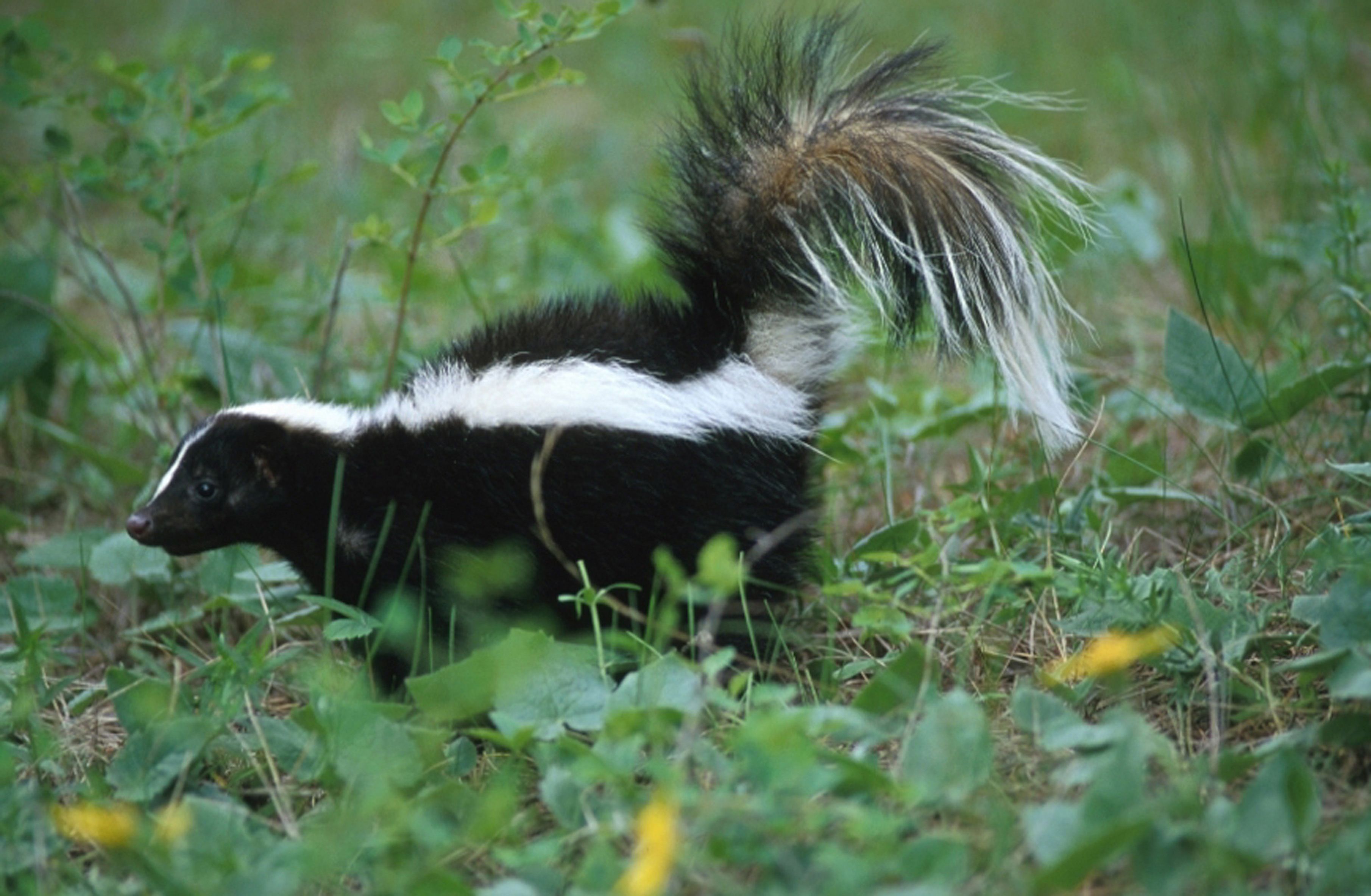Skunks are illegal to rehabilitate in the state of Nebraska. Please follow the instructions here to ensure that skunks aren't needlessly displaced or injured, as we cannot legally rehabilitate those that are negatively affected by human action.
About Skunks
Skunks are best known for the pungent smell they use to defend themselves from predators. Most skunks will be kind enough to give you a warning – a lifted tail and foot stomping – before spraying. Striped skunks are found throughout the United States in a wide variety of habitats. Skunks are in the weasel family and are primarily nocturnal, searching for food at night. They eat insects, rabbits, birds and eggs, carrion, fruit, and small vertebrates and thrive in urban neighborhoods. Female skunks give birth in the spring to a litter of up to 10 kits that stay with their mother for several months after birth. Summer dens are in rock piles or hollow logs, and winter dens are more substantial underground burrows, often originally excavated by woodchucks or badgers.
Discouraging Skunks
On Lawns
Skunks are attracted to birdseed and pet food left outside at night. Keeping bird feeders high out of reach and bringing pet food in at night will prevent these from becoming food sources for neighborhood skunks.
Rolled-up sod on lawns is also characteristic of skunk damage and is a result of their search for large grubs such as June bug larvae. If the grub population is high, skunks may return repeatedly, rolling up extensive areas of sod on successive nights. Treat your lawn for grubs to avoid this problem. This problem generally is most prevalent with new sod rather than established lawns.
Underneath Buildings
If you wish to exclude a skunk from a den under your house, porch, or outbuilding, wait until late summer, after any young have been weaned. Try one or more of these to humanely exclude the skunks from the den:
- Partially dig out the entrances to the burrow, and clear away surrounding vegetation.
- Place quantities of used kitty litter inside all burrow entrances.
- Play a radio near the burrow entrance for 24-48 hours straight.
- Spread coyote urine liberally all around the entrance to the burrow.
- After the animal has left the burrow, pack the entrance lightly with hay or bunched up newspaper. If it remains undisturbed for three to five days, you can assume the burrow is unoccupied.
- To permanently close the burrow, excavate the area around the entrance and bury a three-foot-square section of heavy-gauge welded wire (three-inch squares) one foot deep across the entrance of the burrow or fill the burrow with cement. Do not do this until you have verified the den is empty.
Relocation
Trapping and relocating wildlife is not a humane or effective solution. Click here to learn more about why you should not trap and relocate wildlife.
Skunk Odor Remedy for Dogs
Tomato juice is messy and not as effective as commercial de-skunking products, or this handy at-home recipe. Follow these steps to de-skunk your dog:
Step 1: Keep your dog outside so he/she doesn't transfer the smell indoors. If your dog's eyes have been sprayed and are irritated, flush them with copious amounts of cool water.
Step 2: Mix together:
1 quart of hydrogen peroxide
1/4 cup baking soda
1 teaspoon liquid dishwashing soap
Wearing rubber gloves, wash your dog with this solution immediately after he/she has been sprayed. Take care to avoid your dog’s eyes. (If you don't have peroxide, baking soda, and liquid soap on hand, use vinegar diluted with water.)
Do NOT store this mixture or make it ahead of time, as the mixture could explode if left in a bottle.
Step 3: Clean and rinse
Rub the mixture through his/her fur, but don't leave it on too long or you could bleach your dog’s fur. Rinse thoroughly.
Step 4: Shampoo
Next, wash your dog with pet shampoo and rinse thoroughly. Towel-dry your dog and keep him/her in a warm spot until dry.
If your dog rubbed some of the stink onto you, you can rid your clothes of the smell by using regular laundry detergent mixed with a half-cup of baking soda.

